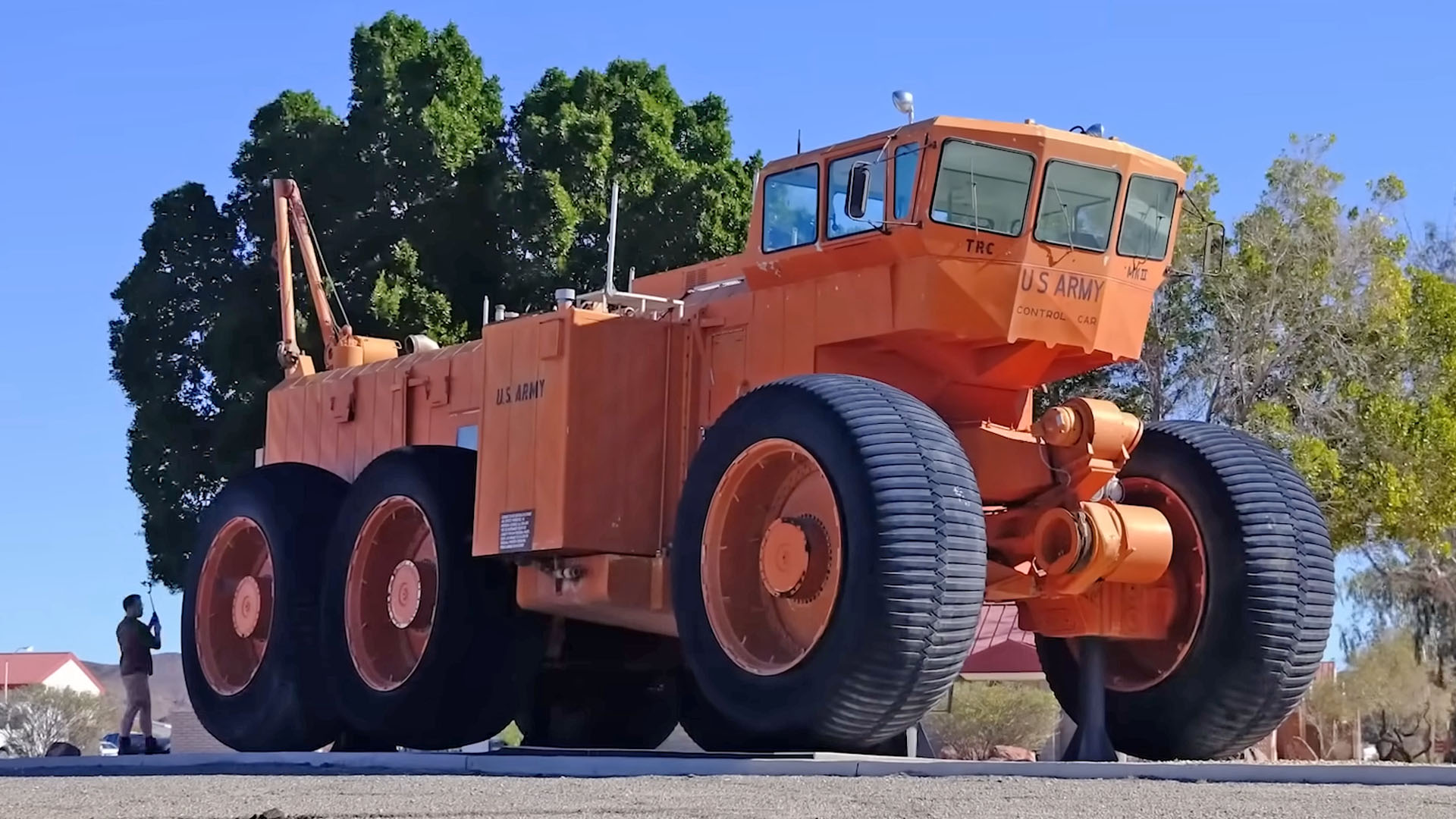

Never heard of an off-road overland train? Imagine a 500-foot-long vehicle with huge wheels that can go over almost any terrain. We’ve written about them in the past, but they’re still a relatively obscure part of Cold War history, partially because so few were made by the only designer/builder of such vehicles, LeTourneau Technologies. There’s still one in very good condition, though, and YouTuber Calum, who has an interest as we do in such vehicles, recently took a tour inside it.
The particular vehicle is a TC-497, and all that’s left of it is the control cab. When it was fully operational, the vehicle featured over a dozen cars and was roughly 570 feet long. All of the wheels were driven electrically with specially designed hub motors. The electricity was generated by gas turbine engines, one of which was in the control cab and others which were located in dedicated power cars.

The TC-497 was designed to deliver hundreds of tons of cargo over long distances without the need for very much dedicated infrastructure. As such, it was equipped with sleeping quarters, a kitchenette, a small mess, and an incinerating toilet. It’s what you might find in a small ship or an aircraft.
There’s also an engine room to manage the turbine/generator—now missing—back behind the sleeping quarters, and a bridge up a short flight of stairs where the vehicle was driven from. The bridge is interesting because the TC-497 was driven more like a vehicle on rails than an automobile. Two rotary levers control the steering and speed. That’s it. There’s a slew of other associated dials switches and knobs, of course, but when it came to actually driving the vehicle, there’s not much to it.


A handful of other off-road land trains were built by LeTourneau, but they’re all in various states of disrepair. Calum’s video covers some of them, and we have also covered them in the past. They can still be visited—two are in Alaska—but as previously mentioned, they are not in great shape like the TC-497, preserved nicely by the dry climate in Yuma, Arizona.
Got a tip? Send us a note: tips@thedrive.com